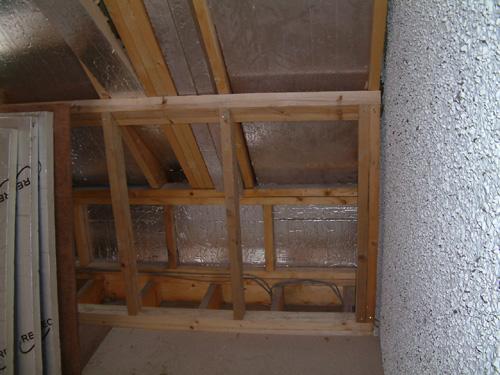I posted this in the Plastering forum in error, here it is again.
Hi, I was away for a few days and my son-in-law started fitting the insulation boards upstairs in the extension.
I had intended cutting the boards level with the top horizontal timber and infilling the vertical timber frame but have to admit his way looks more logical.
Is one way "better" than the other?. There is a sheet of 80mm in place with another sheet of 50mm still to be added.
Also is it easier/better to plaster the original outside roughcast wall or to strap and plasterboard it?.
Hi, I was away for a few days and my son-in-law started fitting the insulation boards upstairs in the extension.
I had intended cutting the boards level with the top horizontal timber and infilling the vertical timber frame but have to admit his way looks more logical.
Is one way "better" than the other?. There is a sheet of 80mm in place with another sheet of 50mm still to be added.
Also is it easier/better to plaster the original outside roughcast wall or to strap and plasterboard it?.


